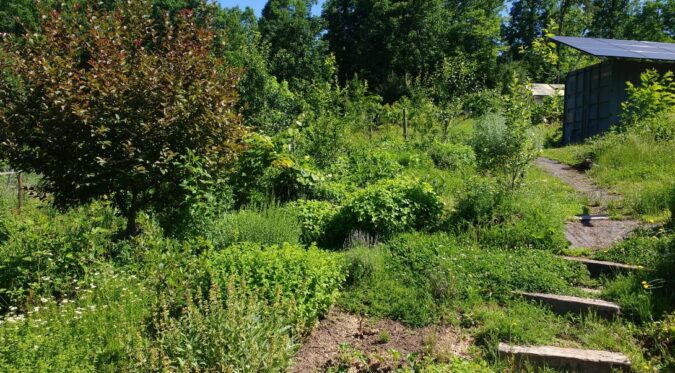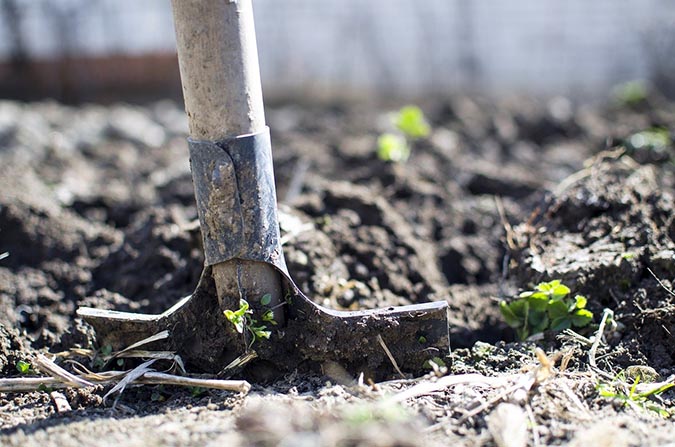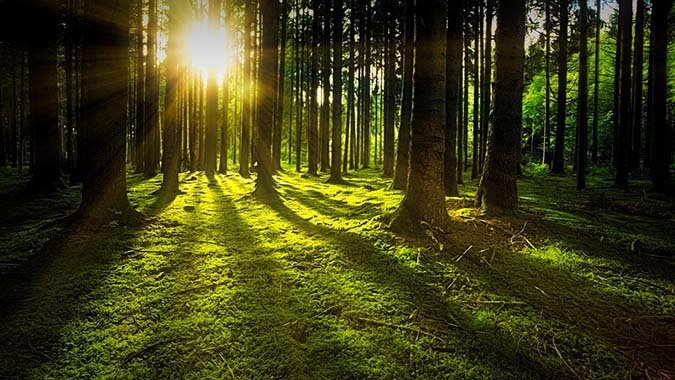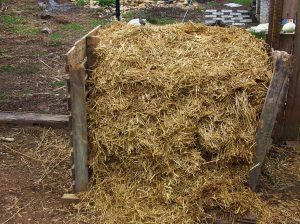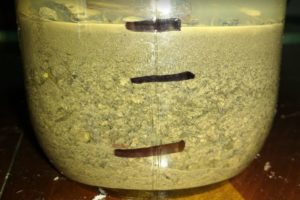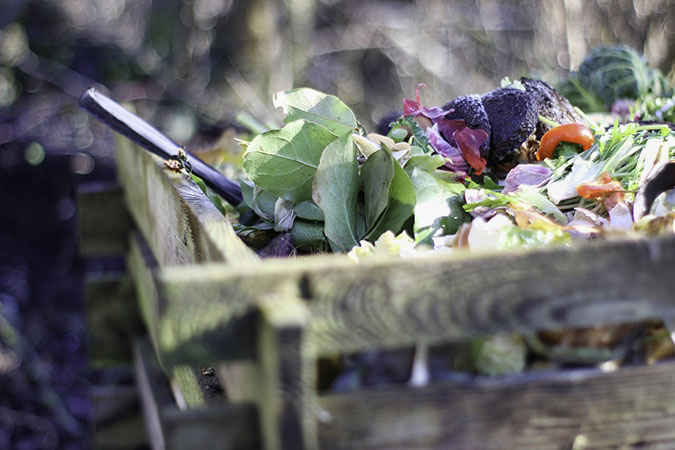Organic matter is your #1 tool for growing healthier, more prolific plants! Learn why it’s so essential and how to manage it in your garden.
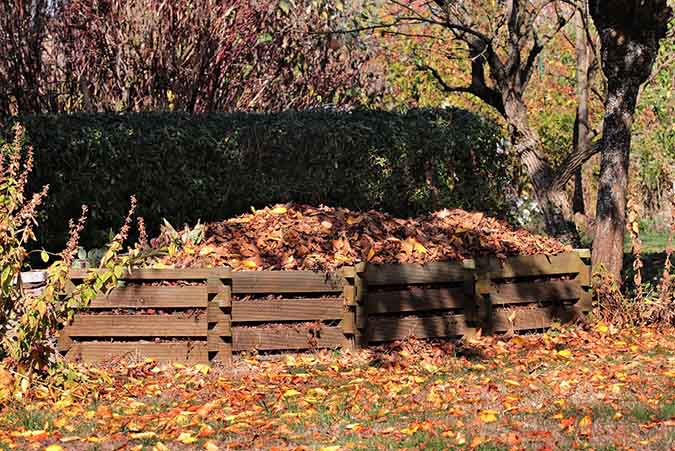
Image by S. Hermann & F. Richter from Pixabay
Organic Matter Is the #1 Tool for Organic Growers
Organic matter is absolute tops when it comes to the tools you can use to improve your garden soil. Before I dive into what organic matter is and why it, um, matters, I want to dish the dirt on dirt, explain what living soil is, and offer an alternative way of thinking about soil so you’ll understand why organic matter is so essential.
The Dirt on Dirt
If you’ve heard of hydroponics, then you know that vegetables don’t even require soil to grow. They need a supply of nutrients and some kind of planting medium that allows plants to set roots. They also need water and the right growing conditions (e.g., temperature, light, etc.).
You May Also Enjoy:
“No Till Gardening: Homesteading Basics (VIDEO)”
“At-Home Soil Test Kits: How to Use Them . . . And Why You Should”
Dirt, like the various growing mediums used in hydroponics, can be used to grow food. However, dirt lacks the right soil structure to allow for good root establishment. Therefore it is tilled to break up compaction so plants can set roots. Unfortunately, tilling facilitates erosion and leads to loss of cropland.
Fertilized Dirt Affects Plant Health
Dirt doesn’t have enough nutrients to grow plants. Concentrated products like fertilizer must be applied.
Like humans who eat mostly junk food, plants grown using fertilized dirt have more health problems. In plants, this manifests as a lack of pest resistance, which then leads to the use of more pesticides.
Irrigation Requirements of Dirt vs. Soil
In areas with insufficient rain, dirt also requires more irrigation than soil. This is because dirt lacks the structure and organic matter necessary for holding water. Use of irrigation leads to depletion of aquifers and desertification of cropland.
We lose roughly 75 billion tons of soil to erosion each year. (According to the USDA, over 50% of our cropland has been severely degraded by erosion and desertification.)1)https://www.nrcs.usda.gov/wps/portal/nrcs/detail/soils/use/?cid=nrcs142p2_054028
This is pretty alarming since only 3% of all land on earth is considered suitable for growing food.
With significant land works, intensive management practices, and irrigation, another 8% of the land on earth could be made usable for crops. However, if you have to go to that much trouble, there is a much better solution.
How about we stop planting in dirt and upgrade to living soil?
Benefits of Living Soil
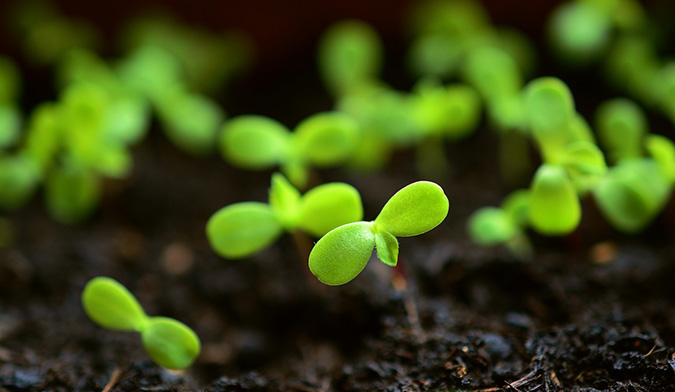
Image by congerdesign from Pixabay
Living soil is not just a planting medium. It’s a thriving ecosystem that hosts billions of life forms (even in a small garden). Growing plants in living soil prevents erosion, can reverse desertification, and creates carbon-storing capacity to mitigate climate change.
Living soil is an antidote to many of the environmental sicknesses plaguing our world today. If people really understood this, we’d be making soil like our lives depended on it. Because they do!
Soil as an Eco-City
Living soil is really a kind of eco-city. It has all the structures necessary to shelter and transport its inhabitants. It has collection methods and holding tanks for abundant water supplies (even in periods of drought). It has self-sustaining food systems so that all residents eat well.
Besides meeting those basic needs—shelter, water, and food—soil offers other amenities. It provides all of its own solar energy. It has local methods for transforming waste products into useful goods to eliminate pollution.
You May Also Enjoy:
“19 Uses for Spent Coffee Grounds in Your Home and Garden”
“5 Things You Should Never Feed Worms”
“Composting the SCARY Stuff—Meat, Dairy, Bones, and Human Waste!”
Soil embraces diversity and welcomes inhabitants of all colors, species, and predilections. In fact, all inhabitants of the soil participate in a system of fair exchange. There’s no social hierarchy in soil. Every member simply does its part in return for having all its needs met.
So, how does this all work?
Soil’s Roof and Solar Panels: Plants
Healthy soils have a continuous succession of plants growing at all times. They provide shelter for the inhabitants below ground. Plant stems and roots are like gutters on houses, funneling water deep into the soil to be collected, stored, and used by inhabitants.
Above-ground leaves act as solar panels. They harness the sun’s rays and transform those rays into packets of energy in the form of sugars. Then, they send that energy to their roots to be accessed and dispersed by other residents (i.e., fungi).
In return for this service, plants receive a great place to put down roots, excellent nutrition, and access to stores of water.
Soil’s Harvest: Organic Matter
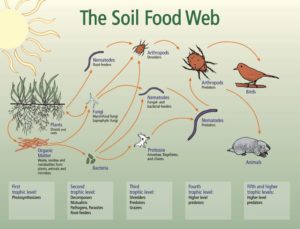
Source: USDA (https://www.nrcs.usda.gov/wps/portal/nrcs/detailfull/soils/health/biology/?cid=nrcs142p2_053868)
Humans harvest plants and animals to eat for sustenance. We may use words like “tomato” and “pork” as descriptors. In broad terms, though, all food is “organic matter.” This organic matter can be easily broken down (i.e., digested) and made into useful nutrition.
Soil inhabitants eat organic matter just like we do. They digest plant matter, meat (such as insects, rodents, etc.), and more. In healthy soil, there is enormous diversity of life and countless different food preferences. As a result, pretty much all organic matter in the soil ends up being food for something.
You May Also Enjoy:
“Purslane: The Omega-3 You Can Grow for Free! (With Recipe)”
“Simple & Effective Worm Composting (VIDEO)”
“Sweet Potato Vines: How to Grow This Antioxidant Powerhouse”
This system is what is often referred to as the soil food web. In reality, the soil food web extends much farther than the illustration indicates. Humans are also part of the soil food web. We eat soil-grown food and add things back to the soil to make up for what we remove as food.
Like all of the other eco-city citizens of the soil, we are obligated to offer a suitable exchange for the food we harvest if we want to keep soil healthy. In conventional agricultural, that usually means applying concentrated fertilizers. This is like an IV for the soil, but is no substitute for the solid food we remove from the soil food web.
You May Also Enjoy:
“5 Inexpensive, Simple Solutions For Small-Space Composting”
“Spinach: “Growing Spinach: Pack a Punch in a Little Bunch”
“Aerobic Compost Tea, Worm Tea, and Leachate—A Clarification”
Since we are effectively taking something high quality and replacing it with something low quality, soil quickly becomes dirt in that scenario. That, then, leads to the environmental problems mentioned earlier.
When our goal is to maintain living soils using organic methods, we have to make fair trades for the food we take from the soil. This is where compost comes in.
Waste-recycling: Compost
Since everything is food for something, nothing goes to waste in healthy soil. This means there’s no need for elaborate waste treatment dependent on toxic chemicals and energy-intensive processes. Instead, waste is essentially composted in place.
For example, when a plant dies, it falls to the ground and gets worked into the soil by surface decomposers like roly polys and beetles. Then worms come along and make quick work of eating any residual plant matter.
You May Also Enjoy:
“Jump-Start Your Compost With These 5 Free, DIY Compost Activators”
Like us, worms have microbes in their gut that digest food. Worm microbes, though, happen to repurpose dead plant matter into water-soluble minerals dispensed as worm poop. Those recycled nutrients are then ready to be taken up by the roots of other living plants.
Worm poop is also exceptionally good at storing water. As worms deposit their droppings, those little packets of bio-available minerals also act as sponges to retain water for later use by plants and other inhabitants.
Additionally, as worms move through the soil in search of food, they make worm holes that allow for better air circulation and help prevent soil compaction.
Think about that for a minute . . . .
In exchange for everything worms need to live well, all they have to do in return is poop and move through the soil, spreading it around. That sounds like a pretty good deal!
Worms are just one of the many soil community members hard at work at composting in place. Innumerable fungi and bacteria are also busy doing similar things, with different benefits, to enhance the soil.
Because humans don’t poop directly in our gardens (for a number of reasons), we have to take a different route to return our contributions to the earth. We usually do this by adding organic matter amendments such as compost, fish emulsion sprays, livestock manure, mulch, etc.
Starting a Soil-Based Eco-City at Home
Once you have a living soil system, you can grow your garden mainly by adding back in a similar quantity of organic matter in exchange for what you remove through your harvest. The hard part is transforming dirt into living soil.
You May Also Enjoy:
“No-Till Gardening: Tiny Life Doing HUGE Work!”
Luckily, there are a lot of soil pioneers that are happy to come to a new location on the promise of a prosperous future. But they do need a few baseline comforts to get started. In particular, they need good infrastructure.
Infrastructure: Clay, Sand, Silt (or Lots of Compost)
The clay, sand, and silt content of soil are similar to the buildings and byways of human cities. These are the permanent structural components of soil. Their composition has a huge impact on how much air and water-holding capacity soil has. They also determine how amenable an area is to plant roots and other soil life.
These elements, along with rocks, are often referred to as inorganic matter. Unlike organic matter, they are slow to decompose and take a lot of time (and effort) to alter.
The Promised Land: Loam
When clay, sand, and silt are present in the right quantities, soil is referred to as LOAM. Loam is the ultimate (and elusive) goal for most of us home food growers.
Real loam is made up of roughly 20% clay, 40% sand, and 40% silt. Unless you already have this kind of soil composition, it can take years to create.
Luckily, you can simulate loam-like soil conditions by adding large quantities of organic matter to your soil on a regular basis.
To create a loam-like environment, most organic growers add 3-4 inches of compost to their garden each year. Preferably, this compost should come from a variety of inputs including vegetative matter, manure, fermented stuff, cardboard, wood, mushrooms, etc.
Compost provides temporary infrastructure for all those adventurous soil pioneers. It offers the comforts of loam until your soil can evolve into real loam.
Covering compost with mulch also helps simulate healthy soil conditions. Mulch (a.k.a. uncomposted organic matter) provides a slow-release food source. It also acts as a temporary roof for your soil until plants grow in and fill that need.
You May Also Enjoy:
“Special Challenges to Managing NPK in the Organic Garden”
“Mycorrhizael Inoculant: A Powerful Solution to the Organic Gardener’s Catch-22”
“5 Reasons Your Green Beans Are Thriving (When Nothing Else Is)”
Simulating loam using organic matter is only a temporary fix. Because organic matter is ultimately a food source for soil inhabitants, it eventually gets eaten up. So, you’ll need to add more organic matter on a regular basis until you achieve loam.
The good news is that the application of organic matter also acts as a catalyst to expedite the transformation of clay-, sand-, or silt-heavy soils into real loam. Over a period of many years, by feeding those pioneering soil inhabitants regular inputs of organic matter, they will modify the texture of your soil.
The transformation takes time. At my current homestead, I started with soil that was over 40% clay. After four years of intensive application of organic matter, my soil is now about 30% clay and ranks as clay-loam soil.
I still have a ways to go to get to the promised land of loam. But even that change from clay to clay-loam has made growing food (particularly planting potatoes) much easier. This is why organic matter is my #1 tool.
(For more info on composting, just search “David the Good” on the TGN blog and get all sorts of incredible ideas for how to compost almost everything!)
Organic Growers’ #1 Tool = Organic Matter
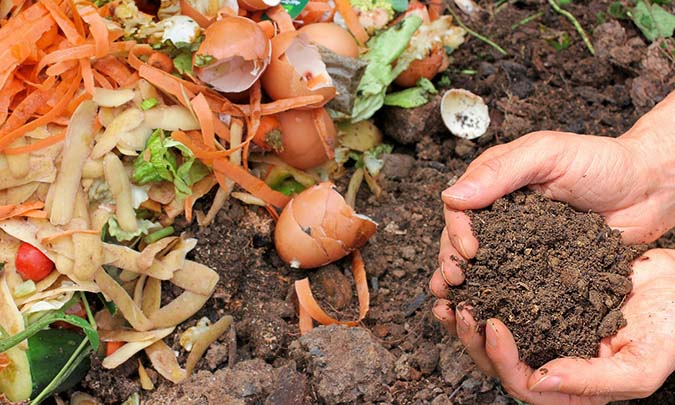
Image by melGreenFR from Pixabay
Lots and lots of organic matter is probably the single most effective tool you can have for building living soil in a hurry. Even if all you do is add 3-4 inches of quality compost each year, you’ll see big improvements in the quality of your soil and its ability to grow food.
There are a few potential hazards from excess organic matter use. There are also a bunch of other things you can do to expedite the transition. If you want to learn about the potential problems with compost and see some of the tools you can use to balance nutrients in your soil, check out this post:
“Supercharge Your Garden! 4 Steps to Vibrant Soil Using Compost and Crop Rotation”
The article you’re reading is the first post in the Organic Growers’ Tool Kit Series, which explores the fundamental tools organic gardeners use to succeed. In the next installment in this series, I show you a simple way to figure out your current soil texture type. And, I explain how that information can help you fast-track soil improvement in your garden and grow healthier food in the near-term.
You can read that article here:
“Clay, Sand, Silt, or Loam? Discover Your Garden’s Soil Texture In 5 Easy Steps”
And if you’d like to explore the other articles in this series, here’s that link:
Read the Other Articles in the Organic Growers’ Tool Kit Series Here
What Do You Think?
What kind of soil did you start out with in your garden, and what have you done to move it closer to loam? Let us know in the comments!
___________________
This is an updated version of an article that was originally published on July 27, 2018. The author may not currently be available to respond to comments, however we encourage our Community members to chime in to share their experiences and answer questions!
The Grow Network is a participant in the Amazon Services LLC Associates Program, an affiliate program designed to provide a means for our team to earn fees for recommending our favorite products! We may earn a small commission, at no additional cost to you, should you purchase an item after clicking one of our links. Thanks for supporting TGN!

Tasha Greer is a regular contributor to The Grow Network and has cowritten several e-books with Marjory Wildcraft. The author of “Grow Your Own Spices” (December 2020), she also blogs for MorningChores.com and Mother Earth News. For more tips on homesteading and herb and spice gardening, follow Tasha at Simplestead.com.
References
| ↑1 | https://www.nrcs.usda.gov/wps/portal/nrcs/detail/soils/use/?cid=nrcs142p2_054028 |
|---|
